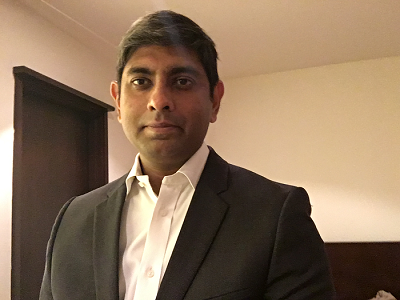3 deaths and a new beginning
By Sandeep Joseph September 7, 2020
- The impending death of old school agencies
- Failure of top management to adapt to digital, key error

 The recent closure of BBDO Malaysia, Havas Media Malaysia and the unpublicized shrinking of a once top agency from 40 people to around 10 has sent shockwaves through the world of Malaysian advertising.
The recent closure of BBDO Malaysia, Havas Media Malaysia and the unpublicized shrinking of a once top agency from 40 people to around 10 has sent shockwaves through the world of Malaysian advertising.
Why did this happen? The advertising industry is typically an oligopoly. There are about 15 global agencies related to 5 big holding groups: WPP, Publicis, Dentsu, IPG, OMG. With the international networks battling to maintain quarterly forecasts, they have no time for struggling outfits in relatively small local markets. Like recent hotel owners the world over, they are happy to shut for a while and open when things get better.
But the truth is deeper and more stark: Traditional agencies were dying, some slowly, some more rapidly, even before Covid-19 hit. Now those who were on life support are seeing the Grim Reaper approach.
You could call it Digital Darwinism, with the survival of the fittest, but survival is much more than that. It isn’t about offering glib solutions for content on Tik Tok. It’s not about having a social media team that can produce content endlessly. And it is not about squeezing out more value from struggling media owners to offer to clients.
It is about the failure of top management at communication companies. They have failed to understand the seismic shifting consumer landscape, and have failed to adapt their companies fast enough. It’s about holding on to status quo and hoping that some loyal clients will stay even if the agency cannot offer relevant solutions anymore. It’s about avoiding hard decisions that require existing staff to reset, re-learn, re-skill or resign.
Most traditional agencies can talk smoothly about digital, and have a few staff who “get” it. But these people cannot shoulder the burden of digital nativism for the rest of the company. The top layer of most agencies is not very digital savvy, and expensive to maintain. At its heart, that’s the problem. Traditional network agencies have largely not been able to re-invent fast enough. The solution lies in pivoting to a more digital offering, getting into e-commerce, analytics, technology. Agencies need to blend creativity with technology if they are to be relevant to their clients. If they cannot do that rapidly, expect more closures and quiet retrenchment before things get better.
The impending demise of traditional media monopolies
They are not gone yet, but their future seems bleak.
Monopolistic media owners like Star Media Group and Astro are struggling, while Media Prima too is going through extremely hard times. Ironically, the more-than-30% rise in traffic, eyeballs and viewership that accompanied the pandemic that these mediums received, has not changed their fortunes in terms of ad revenues.
In the case of Star Media Group’s anchor product, The Star daily newspaper, this decline has long been brewing. At its height, just 4 years ago, the Star commanded over 80% of print ad spend in English newspapers, which themselves commanded a lion’s share of total ad spend. Today, ironically, Star Media Group still commands over 70% of English language print ad spend. But the world has changed. Print has shrunk from being over 50% of all adex 10 years ago, to being less than 25% of monitored adex, which itself does not include digital and OOH. Hence in reality, newspapers now receive less than 18% of all ad spend.
Star Media Group’s revenues fell 20% in Q1 of 2020 to US$15.9 million (RM65.8 million), even before Covid-19. Revenue fell significantly again in Q2 to US$7.6 million (RM31.5 million) representing a QoQ drop of 48%. The failure to invest in startups early on (like the Star Venture Fund, which was a good idea and then was shut down) is not the only failing.
The launch of Dim Sum, a video content channel targeting the Chinese, has seen colossal investment with little returns. Just like Tonton and iflix, Dim Sum has found it difficult to attract viewers, despite relatively affordable pricing. A plethora of Chinese content is also available for free online, legally and illegally, and the audience is spoiled for choice. Even iflix had plans for a paid model, but eventually ended being largely free, because it knew consumers would not pay for content. For Dim Sum, the value proposition needs to be modified if the situation is to be reversed.
The acquisition of PropWall has not seen Star Property overtake iProperty. When the Star took it over, PropWall was the number two player in the market. But over time, iProperty has maintained its lead and other new players have caught up. It’s not easy for a traditional company, fuelled on years of prosperity, to manage differently or push ahead in digital. Leading management gurus talk about how traditional organizations should give free rein to digital innovation, and not measure it by benchmarks of the old ways. Traffic, growth, buzz and momentum count for more in the short term than revenues, for instance, although revenues must pick up eventually. This requires a management culture change.
Further, the inability to grow digital advertising faster is hurting, but it was unrealistic or extremely wishful to expect digital ad spends to cover for print, when the initiative to push digital happened too late.
A modernising country like Malaysia needs a strong credible news source. In the age of digital news where facts are hard to find and fake news abounds, this becomes even more imperative. Star Media Group was well positioned to become that trustworthy source. But while traffic to The Star’s sites has grown during lockdown, ad revenues have not. Clients have rushed to the familiarity of Google, Facebook and Instagram. Star Media Group may have squandered their opportunity irretrievably.
Different story for Astro
Astro’s is a different story. While cord-cutters had led to a decline of 9% in subscribers in Q1 2020, TV viewership went up during the pandemic. But the small ad gains at this time will not be enough to compensate for the general trend towards cheaper and seemingly more accountable digital platforms. Subscription revenues will continue to be under threat, as consumers tighten their belts in the current uncertain environment.
There are some silver linings in Astro’s playbook though.
The platform has tried launching multiple different apps, and also has the courage to shut down stuff that does not work. Its new Ultrabox is seeing a good take-up rate. Astro’s home shopping channel is doing well, is profitable, and clients from very diverse categories are reporting positive results. Some of the movies Astro has produced have been blockbusters, proving that they have a good handle on the pulse of Malaysians. Astro seems to be managing the difficult changes in the media landscape better than Star Media Group.
But paid TV’s share of advertising is declining steadily, and while the medium itself is unlikely to disappear in the next few years, cost structures including the cost of content need to rationalise to this new normal.
FMCG advertisers, the mainstay of traditional media, have cut their ad spend tremendously. Unilever’s monitored (traditional media, without digital and OOH) ad spend has reduced from RM1.7 billion in 2016, to RM468 million in 2019. That’s a decline of 70% in 4 years. TV is the main loser.
[RM1 = US$0.24]
And this is before the pandemic hit, so things will get more dismal.
The death of ROI metrics
Faced with a decline in revenues of more than 75%, during the pandemic, traditional media owners are offering ridiculously priced ad deals. You can buy out-of-home media, for instance, at 70% off its rate card value. While that may serve to maintain some semblance of revenues, it also creates the perception of a good deal. It works on the assumption that “more is better” and “cheaper is good”. In terms of ROI, the medium has gone from 1.5-2:1 ROI to 4:1 or 6:1 ROI.
This is not a bad thing in itself and it caters to a cash-strapped, deal-seeking client. Media agencies sell these deals as “great ROI” or return on investment. But is buying a lot of something that you don’t necessarily need or will not drive your sales actually a good deal? The problem with the ROI metric is that “more” or “cheaper” becomes the currency. In a rush for self-preservation, media owners and clients are losing sight of the other questions they should be asking:
- “This is great pricing, but is it good for my brand?”
- “How can I leverage this and use technology to augment or track its effectiveness”
- “What happens to rates once the sale period ends? And why should I stay on your platform after that, when people are working from home?”
These questions can be answered, using the power of today’s mobile technologies and various ad-tech. Clients should focus on asking these questions. ROI will see great crimes committed in its name. And great ROI does not mean business effectiveness and value. That’s the death of the conventional metric that must happen at this time. Now is the time for strategy and digital to rise to the fore to ensure clients and agencies go beyond pricing to relevance, engagement and sales conversions.
A new beginning
How will the near future pan out?
Some argue that clients will accelerate the process of taking advertising inhouse, and agencies may have a lesser role in the future. This could be the case, but in-housing creative and media experiments that clients have performed has shown mixed results.
Retaining talent, fostering a creative climate and allowing for eccentricity and personality are not things that many client organisations do well.
Agencies have a role to play in the ecosystem, but they need to save themselves first.
The pandemic must see the collapse of ailing business models and it will take a hard-fought battle to survive. The wise companies will be those who question what they see, look for the underlying shifts and focus on building strategic understanding and advantage at this time, while managing short-term costs.
If communications businesses can invest, they must do so in building their digital nous.
Here are just some of the steps communication agencies and indeed media platforms need to take, molto pronto:
- Hire more digitally-savvy people
- Create a culture of reinvention, and re-train existing traditional-oriented staff
- Think like a consumer and find new platforms and channels to engage and convert
- Commit to technology, and to martech
- Invest in analytics
- Be accountable for business results, not just for communications
Pivoting rapidly and gracefully is key. Else Corona will become the virus that put advertising in ICU.
Sandeep Joseph is co-founder and CEO of Ampersand Advisory, a consulting agency that combines media, creative and data to deliver immediate business results for clients. To debate the article: [email protected]
Related Stories :


